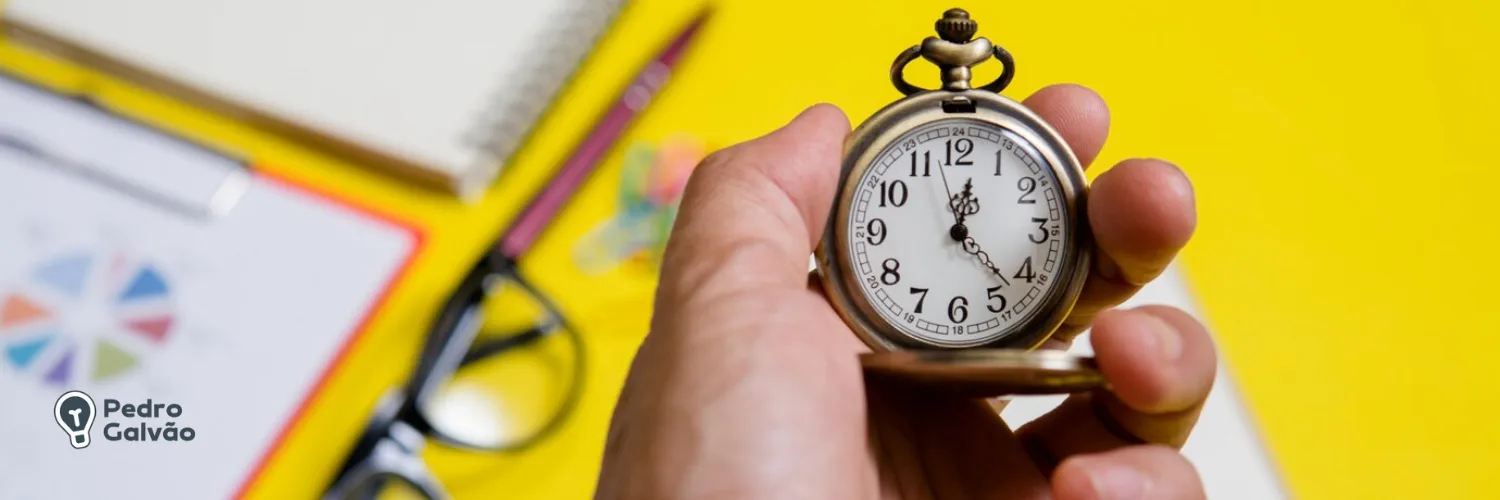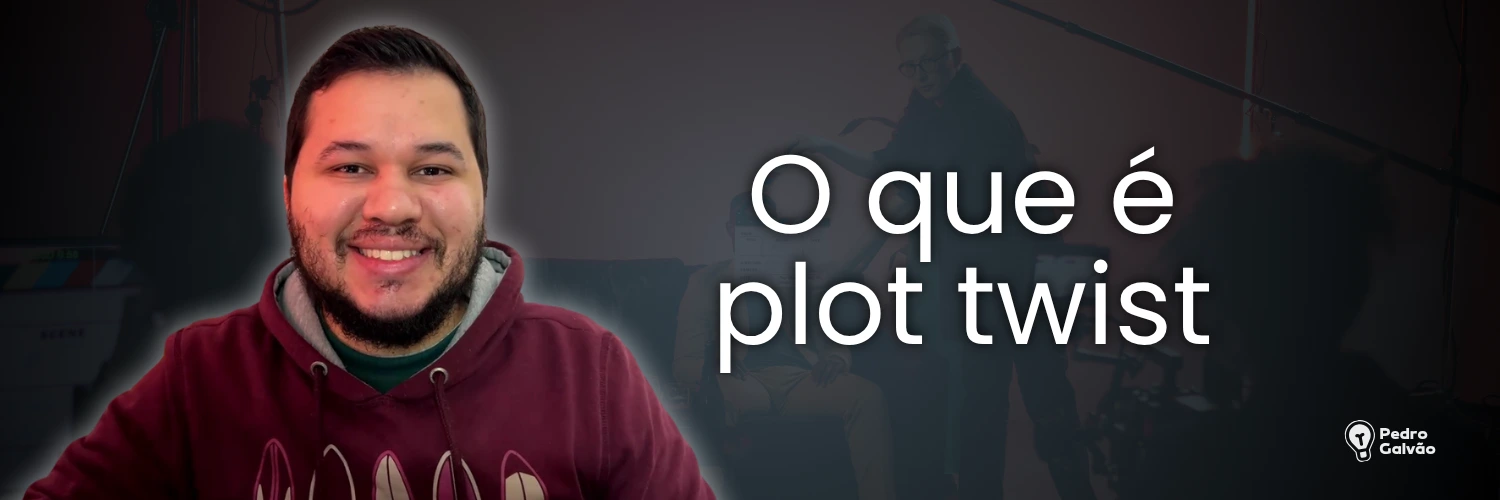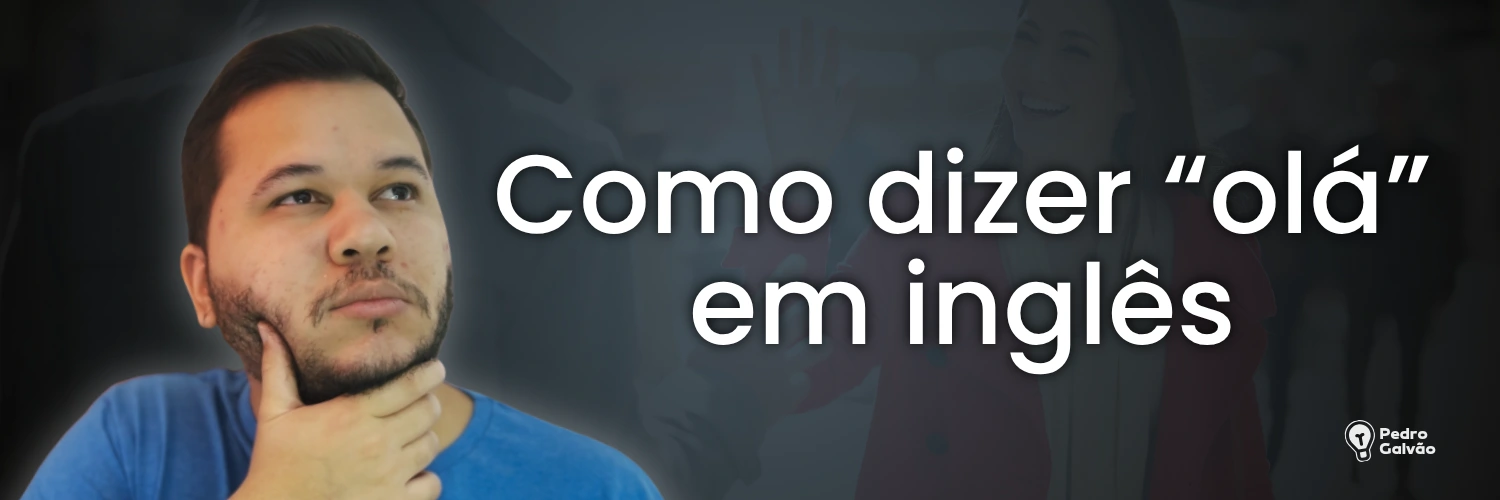O present perfect é um tópico fundamental quando se trata de aprender inglês. Ele é um dos tempos verbais mais versáteis e, muitas vezes, confundido por estudantes da língua. Então neste artigo vamos desvendar o mistério por trás do present perfect, explicando o que é e como usá-lo de forma clara e prática.
Se você deseja aprimorar suas habilidades na língua inglesa e dominar o uso desse tempo verbal, você veio ao lugar certo. Vamos explorar o present perfect em detalhes, para que você possa usá-lo com confiança em suas conversas e escrita em inglês.
Quer aprender inglês de forma prática e flexível? Inscreva-se no nosso curso online de inglês e comece a melhorar suas habilidades de comunicação hoje mesmo! Com aulas dinâmicas e conteúdo adaptado às suas necessidades, você pode estudar onde e quando quiser. Não perca essa oportunidade de investir no seu futuro!
O que é o present perfect?
De forma resumida, o present perfect é um tempo verbal usado para falar sobre ações que ocorreram em algum momento no passado, mas que ainda têm relevância ou conexão com o presente.
Ele nos permite comunicar situações em que o tempo é um pouco mais fluido do que o passado simples, e a ênfase está no resultado ou no estado atual resultante da ação. Ao entender o present perfect, você poderá expressar experiências, eventos e ações que moldaram sua vida e continuam a afetá-la.
Formação do present perfect
O present perfect é uma forma linguística versátil que se encaixa em várias situações. Então vamos explorar quando é apropriado usar o present perfect em diferentes contextos:
- Ações que acabaram de acontecer: O present perfect é perfeito para descrever ações que acabaram de acontecer, criando um vínculo imediato com o presente. Por exemplo, se você terminou de ler este artigo agora mesmo, você poderia dizer: “I have just finished reading the article” (Eu acabei de terminar de ler o artigo).
- Ações que começaram no passado e ainda acontecem no presente: Quando você deseja destacar a continuidade de uma ação que começou no passado e ainda está acontecendo no presente. Por exemplo, se alguém trabalha na mesma empresa há muitos anos e ainda está empregado, você pode dizer: “They have worked at the same company for many years” (Eles trabalham na mesma empresa há muitos anos).
- Ações que aconteceram no passado e ainda possuem efeitos no presente: Algumas ações passadas continuam a afetar o presente. O present perfect é usado quando você quer destacar essa conexão. Por exemplo, se alguém pergunta sobre suas experiências de viagem e você visitou Paris no passado, você pode dizer: “I have visited Paris” (Eu visitei Paris). Mesmo que a visita tenha ocorrido no passado, o efeito dela ainda é relevante.
- Ações que ocorreram em um tempo não preciso: Quando você não tem um tempo específico em mente, mas deseja comunicar que uma ação ocorreu em algum momento do passado. Por exemplo, se alguém pergunta quando você leu seu livro favorito pela última vez e você não se lembra da data exata, você pode dizer: “I have read it before” (Eu já li antes).
- Coisas que você nunca fez: Às vezes, o present perfect é usado para falar sobre experiências ou ações que você nunca experimentou ou realizou. Por exemplo, se você nunca viajou para o Japão, você pode dizer: “I have never been to Japan” (Eu nunca fui para o Japão).
| Contexto de Uso | Descrição | Exemplo | Tradução |
|---|---|---|---|
| Ações que acabaram de acontecer | Descreve ações que ocorreram recentemente, conectando ao presente. | I have just finished reading the article. | Eu acabei de terminar de ler o artigo. |
| Ações que começaram no passado e ainda acontecem | Destaca a continuidade de algo iniciado no passado que ainda ocorre. | They have worked at the same company for many years. | Eles trabalham na mesma empresa há muitos anos. |
| Ações passadas com efeito no presente | Indica que algo feito no passado ainda é relevante ou tem impacto no presente. | I have visited Paris. | Eu visitei Paris. |
| Ações em um tempo não preciso | Refere-se a ações realizadas em algum momento no passado, sem especificar quando. | I have read it before. | Eu já li antes. |
| Coisas que você nunca fez | Usado para expressar experiências ou ações nunca realizadas. | I have never been to Japan. | Eu nunca fui para o Japão. |
Fale inglês com confiança. Junte-se ao Método RRSLG e transforme seu aprendizado.
Affirmative form (forma afirmativa)
A forma afirmativa do present perfect é usada para afirmar a ocorrência de uma ação ou evento que tem relevância no presente. Portanto, para criar frases afirmativas com esse tempo verbal, siga estas regras:
- Acrescente o sujeito da frase (I, you, he/she/it, we e they);
- Utilize “have” (para “I,” “you,” “we,” e “they”) ou “has” (para “he,” “she,” e “it”) como o verbo auxiliar;
- Em seguida, acrescente o verbo principal no passado particípio.
Aqui estão alguns exemplos de frases afirmativas usando o “present perfect”:
- I have visited New York. (Eu visitei Nova York.)
- She has learned how to play the guitar. (Ela aprendeu a tocar violão.)
- They have read many books this year. (Eles leram muitos livros este ano.)
- He has traveled to several countries. (Ele viajou para vários países.)
Negative form (forma negativa)
A forma negativa é usada para negar a ocorrência de uma ação ou evento que teria relevância no presente. Então para criar frases negativas, siga estas regras simples:
- Acrescente o sujeito da frase (I, you, he/she/it, we e they);
- Utilize “haven’t” (para “I,” “you,” “we,” e “they”) ou “hasn’t” (para “he,” “she,” e “it”) como o verbo auxiliar;
- Em seguida, acrescente o verbo principal no passado particípio.
Aqui estão alguns exemplos de frases negativas usando o “present perfect”:
- I haven’t visited Paris. (Eu não visitei Paris.)
- She hasn’t finished her homework yet. (Ela ainda não terminou a lição de casa.)
- They haven’t seen that movie before. (Eles não viram aquele filme antes.)
- He hasn’t learned to swim. (Ele não aprendeu a nadar.)
Interrogative form (forma interrogativa)
A forma interrogativa é usada para fazer perguntas sobre a ocorrência de uma ação ou evento que tem relevância no presente. Sendo assim, para criar frases interrogativas, siga estas regras simples:
- Comece com o verbo auxiliar “have” (para “I,” “you,” “we,” e “they”) ou “has” (para “he,” “she,” e “it”);
- Em seguida, coloque o sujeito após o verbo auxiliar;
- Depois, acrescente o verbo principal no passado particípio;
- Termine a pergunta com o restante da estrutura da frase.
Aqui estão alguns exemplos de frases interrogativas usando o “present perfect”:
- Have you visited New York? (Você visitou Nova York?)
- Has she learned how to play the guitar? (Ela aprendeu a tocar violão?)
- Have they read many books this year? (Eles leram muitos livros este ano?)
- Has he traveled to several countries? (Ele viajou para vários países?)
Informações complementares do present perfect
Agora que você entendeu quando e como usar o present perfect, vamos ver algumas informações complementares que irão enriquecer seu conhecimento sobre este tempo verbal.
Since e for
Dentro do contexto do present perfect e do present perfect continuous, duas palavras frequentemente utilizadas são “since” e “for.” Ambas são usadas para indicar a duração ou o início de uma ação, tornando suas frases mais precisas:
- Since (desde): Utilizamos “since” para indicar um ponto específico no passado em que a ação começou. Por exemplo: “I have been learning English since 2010” (Eu estudo inglês desde 2010). Aqui, “since 2010” indica o ponto de partida da ação.
- For (por): “For” é utilizado para indicar a duração de uma ação. Por exemplo: “She has lived in New York for five years” (Ela mora em Nova York há cinco anos). Neste caso, “for five years” especifica a quantidade de tempo que a ação tem ocorrido.
Just, already e yet
Outras palavras frequentemente usadas em conjunto são “just”, “already”, e “yet”. Elas podem adicionar nuances adicionais às suas frases:
- Just (apenas/ agora): Usamos “just” para indicar que uma ação ocorreu muito recentemente. Por exemplo: “I have just finished my meal” (Eu acabei de terminar minha refeição).
- Already (já): “Already” é usado para indicar que uma ação ocorreu antes do esperado ou em um momento anterior. Por exemplo: “They have already left for the airport” (Eles já partiram para o aeroporto).
- Yet (ainda/ já): “Yet” é frequentemente usado em perguntas negativas e significa “ainda” ou “já.” Por exemplo: “Have you finished your homework yet?” (Você já terminou sua lição de casa?). “Yet” pode indicar que a ação ainda não ocorreu ou que ela deveria ter ocorrido até o momento presente.
Verbos irregulares e regulares
Outro aspecto importante do present perfect é a forma dos verbos no passado particípio. Alguns verbos são regulares, o que significa que seguem um padrão, adicionando “ed” ao final. Por exemplo, o verbo “work” se torna “worked” no passado particípio.
Por outro lado, existem os verbos irregulares que têm formas diferentes no passado do particípio. Um exemplo, o verbo “go” se torna “gone.” É essencial memorizar as formas irregulares dos verbos para usar o “present perfect” de maneira correta.
Diferença entre o present perfect e o present perfect continuous
Agora que você entende o present perfect, é importante destacar a diferença entre ele e o present perfect continuous. Ambos são tempos verbais que relacionam o passado com o presente, mas eles têm usos e significados ligeiramente diferentes.
| Aspecto | Present Perfect | Present Perfect Continuous |
|---|---|---|
| Uso principal | Descrever ações concluídas ou experiências passadas que têm relevância no presente. | Focar na duração ou continuidade de ações que começaram no passado e ainda estão em andamento. |
| Ênfase | No resultado ou efeito da ação no presente. | Na continuidade ou duração da ação. |
| Estrutura | Sujeito + have/has + verbo no particípio passado (past participle). | Sujeito + have/has + been + verbo no gerúndio (-ing). |
| Exemplo de ação concluída | I have finished my homework. | (Não aplicável: present perfect continuous não é usado para ações concluídas.) |
| Exemplo de ação contínua | I have worked here for 5 years. (ênfase no tempo decorrido). | I have been working here for 5 years. (ênfase na ação contínua e seu progresso). |
| Exemplo de ações recentes | She has just arrived. | She has been studying all afternoon. |
| Quando usar? | – Para ações passadas com impacto no presente. | – Para ações que ainda estão em andamento ou acabaram de terminar, com foco no esforço. |
| Palavras comuns associadas | Just, already, yet, ever, never. | For, since, all day, all morning, recently. |
Exercícios de present perfect
Praticar é fundamental para dominar qualquer conceito gramatical, incluindo o present perfect. Aqui estão alguns exercícios para ajudar você a consolidar seu entendimento e aprimorar suas habilidades com este tempo verbal:
Exercício 1: Complete as frases abaixo com a forma correta do present perfect.
- She __________ (travel) to five different countries.
- They __________ (never visit) that museum.
- How long __________ you __________ (study) English?
Exercício 2: Escreva frases sobre as seguintes situações usando o present perfect.
- Você acabou de acordar.
- Você conhece alguém famoso.
- Você já viajou para outro país.
Respostas:
Exercício 1:
- She has traveled to five different countries. (Ela viajou para cinco países diferentes.)
- They have never visited that museum. (Eles nunca visitaram aquele museu.)
- How long have you been studying English? (Há quanto tempo você está estudando inglês?)
Exercício 2:
- I have just woken up. (Eu acabei de acordar.)
- I have met a famous person. (Eu conheci uma pessoa famosa.)
- I have never traveled to another country. (Eu nunca viajei para outro país.)
Em resumo, praticar com exercícios como esses ajudará você a se sentir mais à vontade ao usar o present perfect em diferentes situações. Lembre-se de que a prática constante é a chave para aperfeiçoar suas habilidades linguísticas.
Perguntas frequentes sobre Present Perfect
O present perfect é usado para descrever ações que começaram no passado e têm relevância para o presente. Geralmente, indica uma conexão entre o passado e o momento atual, enfatizando o resultado atual da ação.
O present perfect é usado para expressar experiências passadas, mudanças ao longo do tempo, ações concluídas recentemente ou ações que ocorreram em um período de tempo não especificado.
Um exemplo de present perfect seria: “I have lived in this city for five years.” (Eu moro nesta cidade há cinco anos.) Aqui, a ação de viver na cidade começou no passado e tem relevância para o presente.
Os verbos no present perfect são formados pelo verbo auxiliar “have” (ou “has” na terceira pessoa do singular) seguido do particípio passado do verbo principal. Exemplos incluem: have worked (ter trabalhado), have studied (ter estudado), has traveled (tem viajado), have eaten (ter comido), entre outros.





